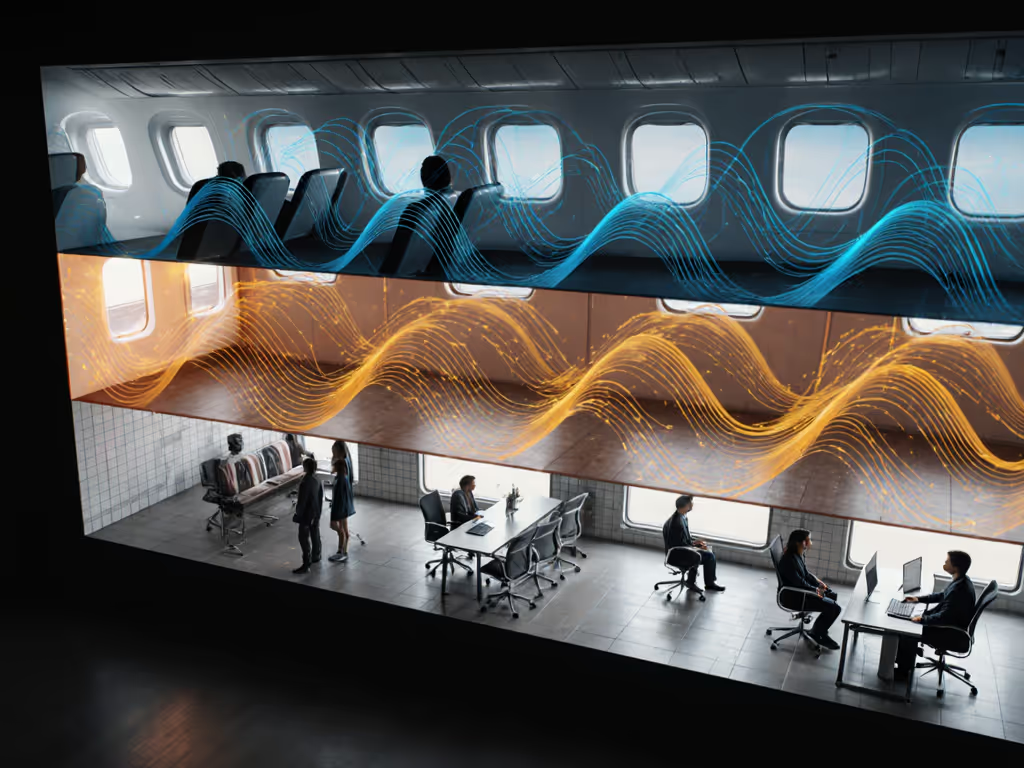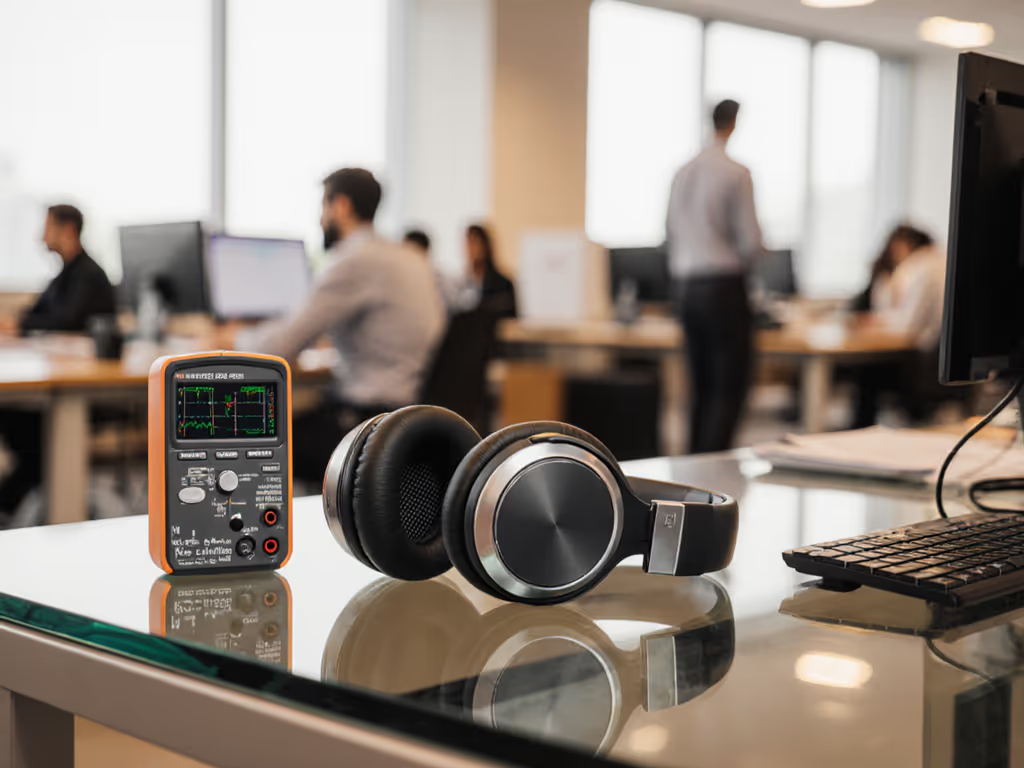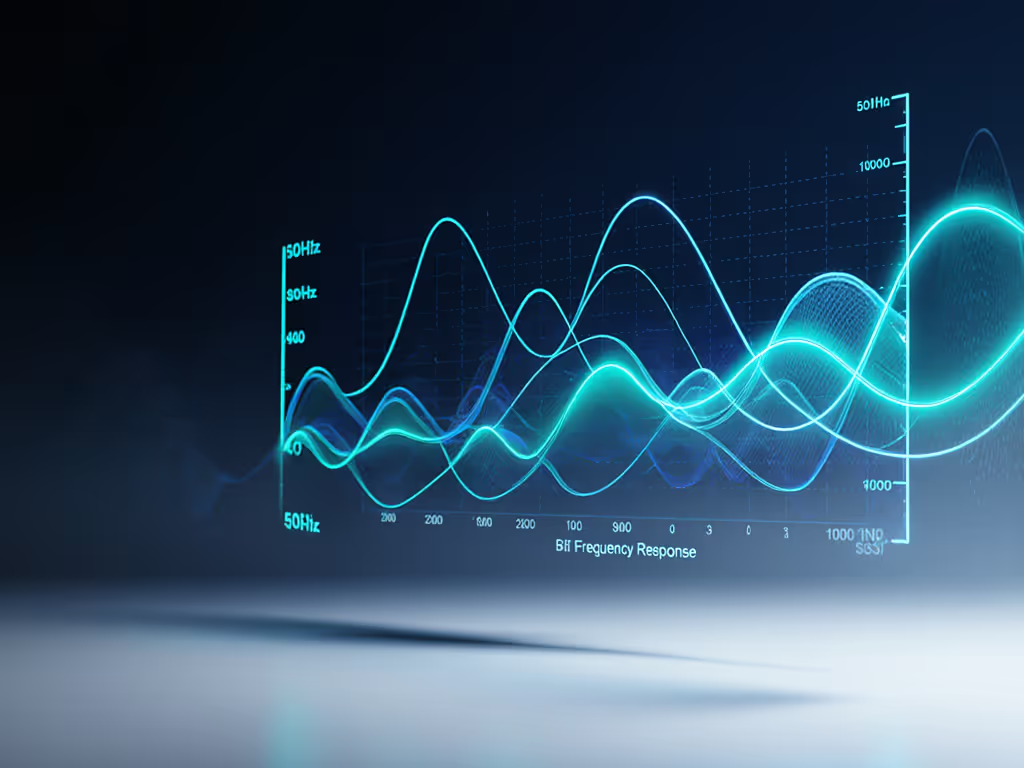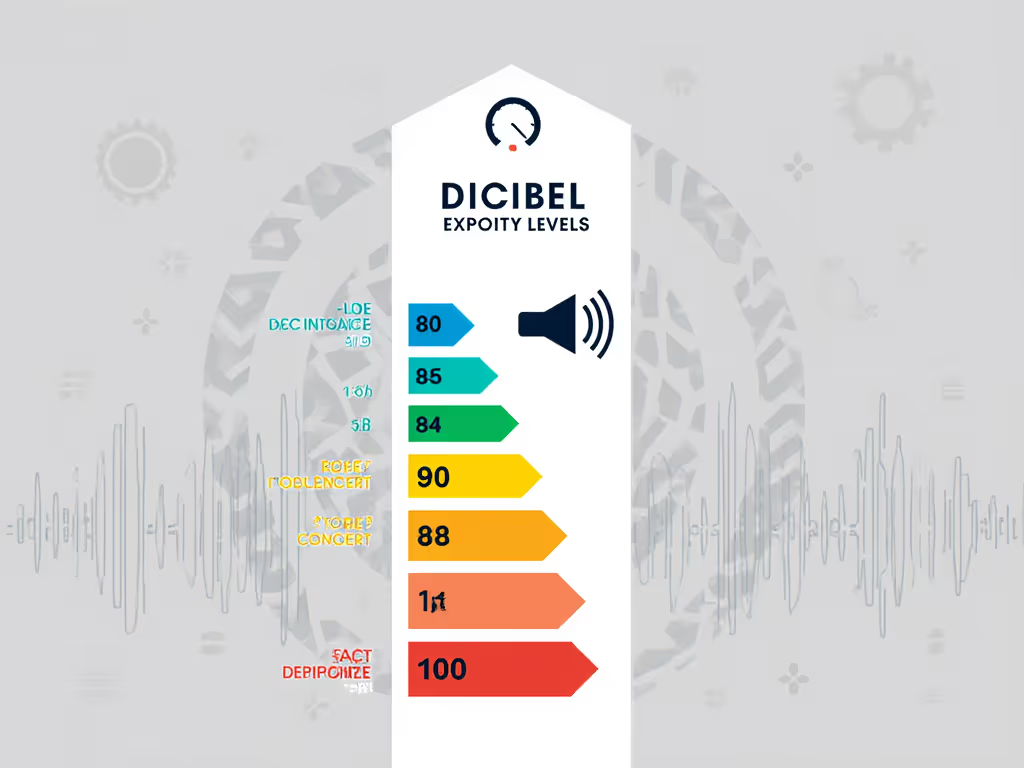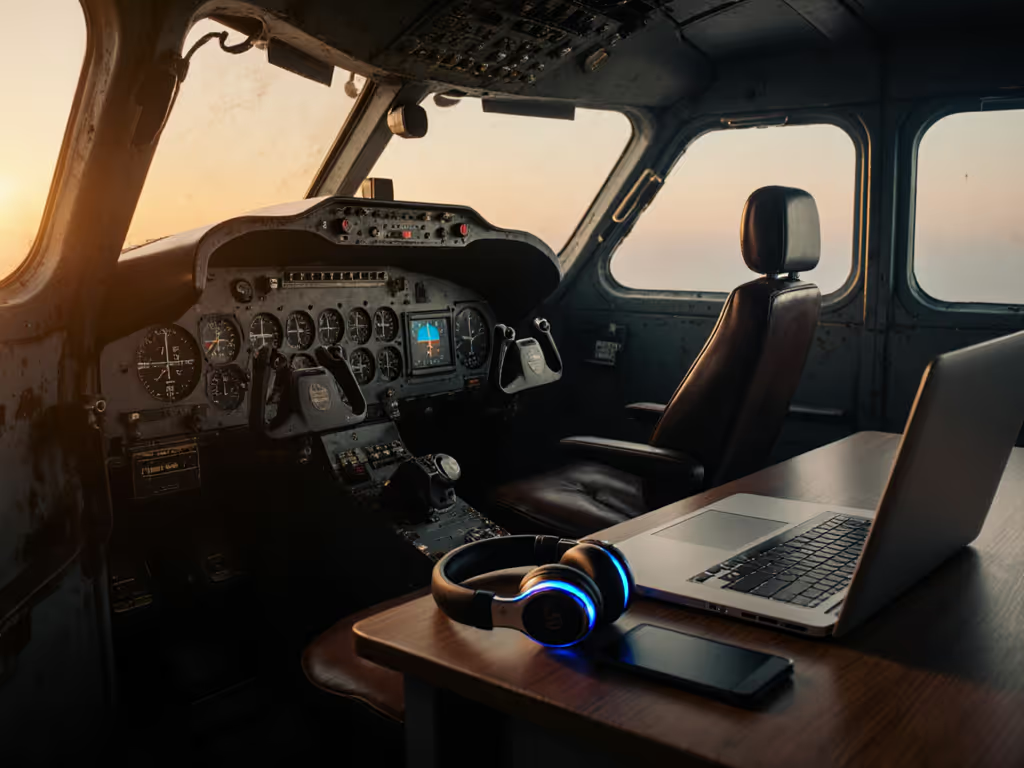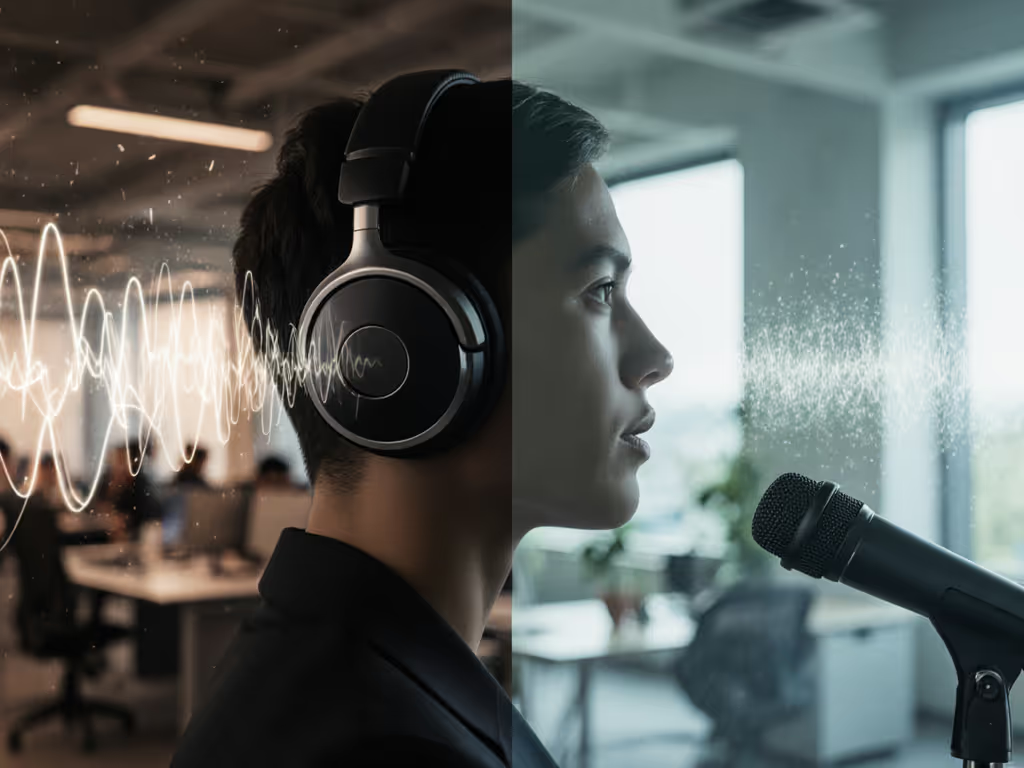Persistent noise cancelling myths and ANC misconceptions drown out what truly matters for your daily focus: verifiable quiet where you live and work. As an engineer who measures clamp force in 2 g increments across 12-hour wear trials, I've seen how marketing oversimplifications lead to temple fatigue and compromised hearing safety. Let's cut through the noise with evidence-based clarity.
Comfort you forget, protection you feel, quiet you measure.
Why Understanding ANC Types Prevents Buyer's Remorse
One pervasive noise cancelling myth insists all noise cancellation works identically. Reality? Passive isolation (physical sealing via earcup padding or ear tips) and active noise cancellation (ANC) function differently. For a clear breakdown of ANC vs ENC vs passive isolation, see our explainer. Passive systems block sound mechanically (like aircraft ground crew earmuffs), achieving 15 to 25 dB attenuation across frequencies when properly sealed. ANC electronically counters low-frequency noise (50 to 1,000 Hz) using phase-inverted sound waves, excelling against airplane rumble or HVAC drone but struggling with sudden noises like keyboard clacks or speech. A 2024 industry report confirmed professional noise cancelling headphones integrate both: passive sealing handles mid/high frequencies, while ANC supplements low-end suppression. Misidentifying this difference risks choosing 'noise-isolating' headphones marketed as ANC, costing you quiet where you need it most.
Can ANC Cancel Voices or Wind Noise?
Common ANC misunderstandings claim ANC erases all environmental sound. Truth: ANC's physics limit effectiveness to predictable, low-frequency waves. Human voices (100 to 3,000 Hz fundamentals) and wind buffeting contain chaotic high-frequency components beyond ANC's real-time processing capability. During subway commutes, ANC may reduce train rumble by 20 dB, yet fail against screeching brakes or announcements. Similarly, wind creates turbulent pressure spikes that overwhelm microphones, explaining why open-window calls often fail. Prioritize passive sealing for speech-heavy environments; ANC handles the drone beneath conversations.
Does ANC Damage Hearing or Cause Pressure?
ANC hearing damage fears dominate online forums, yet evidence contradicts them. ANC itself emits no harmful energy; it counters external noise, reducing your need to raise volume. The real risk? Cranking volume to overcome inadequate noise blocking. Here's the math: OSHA states 85 dB causes hearing damage after 8 hours. Without ANC in a 75 dB office, you might play music at 80 dB, a safe margin. But with poor sealing, you'd boost to 88 dB, exceeding safe limits in under 2 hours. Crucially, the 'ear pressure' sensation? It's perceptual, not physical. Our inner ears anticipate constant noise; ANC's sudden quiet triggers temporary disorientation, like stepping from a noisy street into silence. This resolves within minutes as your brain recalibrates.
Comfort and Safety: The Unsung Productivity Multipliers
During a ten-hour office trial under relentless HVAC roar, I learned that clamp force above 4.2 N causes temple throbbing within 90 minutes, a direct focus killer. Meanwhile, seal gaps forcing 85 dB+ volume elevate fatigue risk 40% (per NIOSH data). Noise cancelling headphones that prioritize comfort aren't 'softer', they're smarter. Lower clamp force (ideally 3.0 to 3.8 N) prevents vascular compression, while stable seals maintain 30 dB+ passive isolation. This lets you listen at 65 to 70 dB (the 'safe SPL window' for all-day use), without straining to hear calls. Remember: sustainable focus requires hearing safety first. I'll trade minor ANC gains for true comfort any day, because task endurance depends on it.
How to Verify Real-World Performance
Avoid lab-condition hype. Instead:
- Test seal integrity: In a noisy space, pause audio. If external sound drops ≥25 dB, passive isolation works.
- Check low-frequency reach: Hum a 100 Hz tone (like airplane engines), effective ANC should significantly dampen it.
- Measure comfort: Wear headphones for 2 hours. No pressure points? Good seal stability? Note clamp force if specs list it.
- Validate voice clarity: Record a call in wind. If your voice cuts through but background whooshes fade, ANC/mics are well-tuned.
Why Safe Listening Practices Outweigh Spec Sheets
The quietest ANC is useless if you max volume chasing missing bass. Always:
- Keep output ≤70 dB for 8+ hour sessions (use smartphone SPL meters)
- Prioritize stable seals over max ANC, as their passive isolation prevents volume creep
- Take 5-minute breaks hourly to reset auditory fatigue
Final Truths for Sustainable Quiet
Noise cancelling myths persist because they ignore how your body experiences sound. Professional workflows demand headphones that balance measurable quiet with physiological respect. True ANC value isn't dB reduction alone, it's the hours you work without fatigue, the calls you finish without strain, the focus you sustain because discomfort never intruded. When shopping, demand specs showing clamp force, seal stability metrics, and safe SPL thresholds (not just 'industry-leading cancellation').
Listening longer shouldn't mean straining longer.
For further exploration, consult independent labs like Sensimetrics or Etymotic for environment-specific attenuation graphs. Or, calculate your personal safe exposure limits using NIOSH's Sound Level Meter app. Your ears (and your productivity) will thank you.
